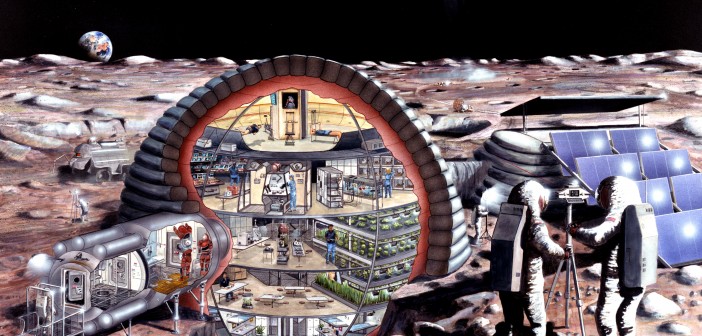Everything we know about the moon has been changed…but what would mining off-Earth mean for humanity?
In December 2013, something shocking happened: the Chinese Yutu (or “Jade Rabbit”) rover landed. Sent to explore the soil content around the moon, Chinese scientists discovered a much younger geological surface than that explored by NASA during the Apollo landings in 1969-1972, and by the Soviet lunar missions.
These results are the first detailed look at the moon’s surface, and the results are complex. Crucially, the results found that the moon has been – geologically speaking — extremely active over the last 3 billion years, with at least 9 layers in its soil – 5 more than previous estimates – all formed through volcanic eruptions. This is the latest in China’s recent interest in the moon and lunar exploration. In November last year, China became only the third nation to launch a successful test mission to the moon and back.

But what does it all mean?
These ground breaking findings underpin a larger movement in lunar exploration activity, in particular from the Chinese government. The Yutu rover is part of the Chinese Chang’e program to explore the moon, with the goal of identifying resources available for mining. Ouyang Ziyuan, a prominent Chinese geologist and chemical cosmologist is the chief scientist for the Chang’e program. He has previously urged for the exploration and mining of the Moon’s surface for uranium, titanium and Helium-3: a power source that can one day be used in nuclear fusion power stations of the future.
According to China space expert Joan Johnson-Freese, a professor of national security affairs at the U.S. Naval War College in Newport, Rhode Island, “China wants to go to the moon for geostrategic reasons and domestic legitimacy.”
To this extent in June 2014, Chinese newspaper The People’s Daily reports that “Chinese aerospace researchers are working on setting up a lunar base,” based on a speech by Zhang Yuhua, deputy general director and deputy general designer of the Chang’e-3 probe system.
The timeline is vague, but the Chinese have indicated that they want to set up a permanent Lunar colony some time in the mid 2020s to begin moon resource mining and research operations.
Private U.S. corporations are also interested in visiting the moon, but the nature of these missions is more commercial in nature, seeing it as a touristic and research opportunity, with the intention to own, lease and operate inflatable space habitats on the moon.
As such, it is important to see today’s discovery, not only as an important milestone for understanding the geological make up of our nearest celestial body, but also as a precursor to a large increase in lunar exploration activity and increased human interaction with the universe.
- Sources
- http://www.space.com/28810-moon-history-chinese-lunar-rover.html
http://www.space.com/23855-how-china-change3-moon-rover-works-infographic.html
http://www.airspacemag.com/daily-planet/yutu-peers-inside-moon-180954551/?no-ist
http://en.wikipedia.org/wiki/Chinese_Lunar_Exploration_Program
http://www.sciencemag.org/content/347/6227/1226
http://www.leonarddavid.com/giving-the-moon-the-business-u-s-faa-backs-bigelow
If you like this article you may be interested in “Russian Astronauts Reveal Bizarre Space Rituals”.






